| Lesson 4 | Remote Authentication Dial-in User Service (RADIUS) |
| Objective | Enable Remote Authentication Dial-in User Service. |
Advantages of RADIUS
The diversity of hardware and operating systems in today's enterprise networks requires remote user authentication to be vendor independent and scaleable. RADIUS support in Windows 2000 facilitates this kind of user authentication, while providing highly scaleable authentication designs for performance and fault-tolerant designs for reliability. A RADIUS client is a remote access server that receives
RADIUS authentication requests and accounting information that is then forwarded to a RADIUS server. Here's how RADIUS provides authentication and accounting services for distributed dial-up networking:
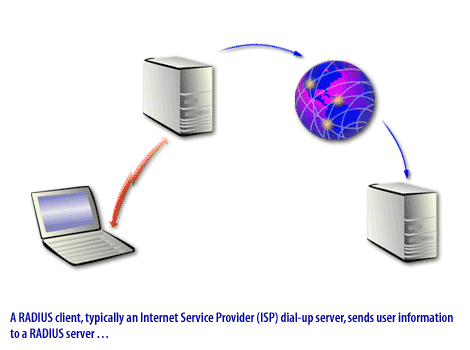
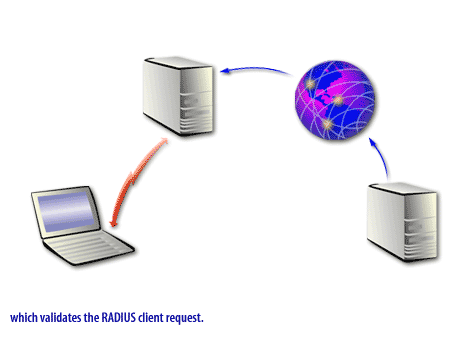
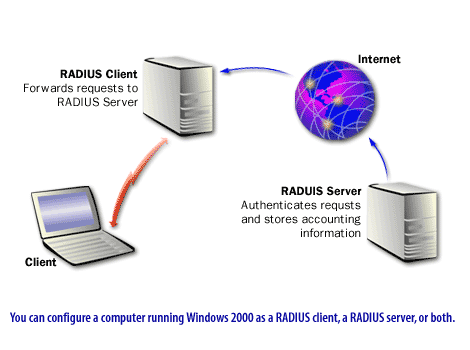
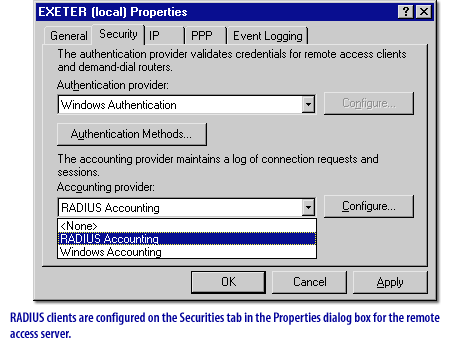
(IAS) - Internet Authentication Service
IAS performs RADIUS authentication and acts as a RADIUS server. IAS stores RADIUS accounting information from RADIUS clients in log files. You can install IAS during the installation of Windows 2000, or
later through Add/Remove Programs in the Control Panel. In the Windows Components wizard, find IAS by selecting Networking Services, and then clicking Details.
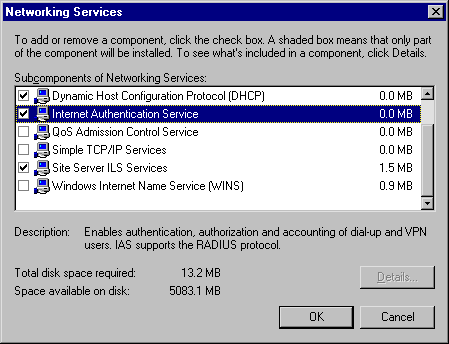
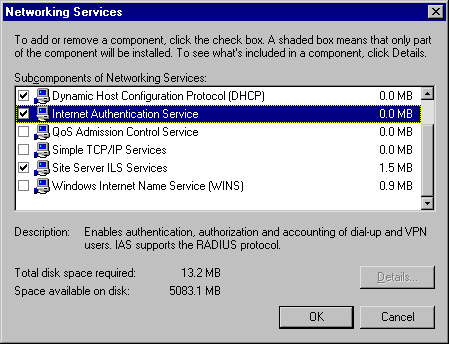
After installation, you configure IAS by using Internet Authentication Service on the Administrative Tools menu.
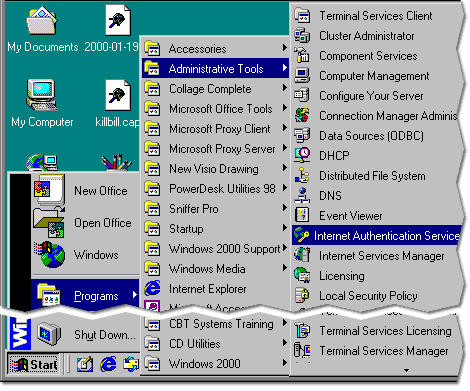
Note: For more information about RADIUS, see RFC 2138 and RFC 2139.
In the next lesson, you'll be introduced to IPSec network protocols.